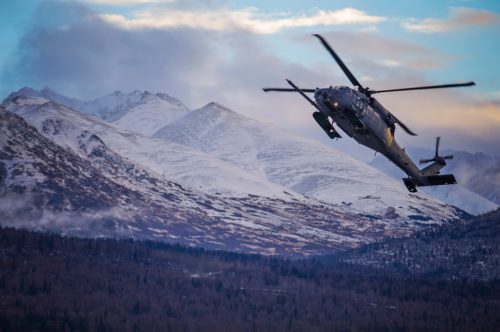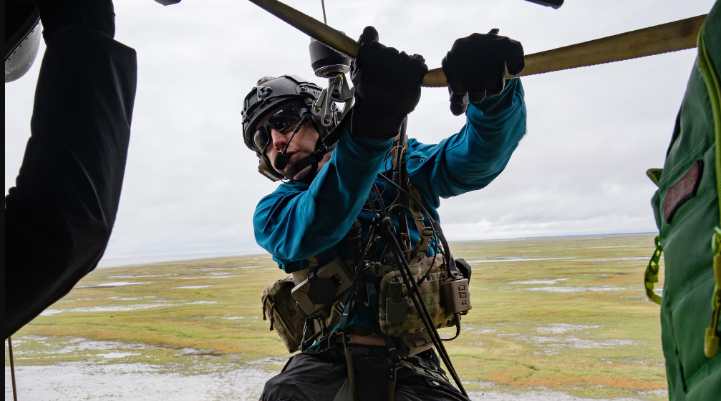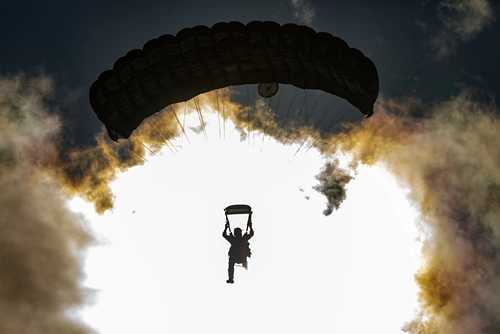
JOINT BASE ELMENDORF-RICHARDSON, Alaska — Airmen with the Alaska Air National Guard’s 210th, 211th and 212th Rescue Squadrons rescued a snowmachiner Oct. 27 approximately 15 miles northeast of Paxson.
According to Alaska Air National Guard Capt. Daniel Dickman, Alaska Rescue Coordination Center, the mission was opened in response to a request for assistance from the Alaska State Troopers. The Troopers were notified when the two snowmachiners riding with the injured individual called 911 on their cell phone.
The friends reported the injured snowmachiner had fallen into a deep ditch located on a steep slope of a mountain ridge. They were afraid he was badly injured and made the decision to call authorities.
An HH-60G Pave Hawk helicopter from the 210th Rescue Squadron and an HC-130J Combat King II from the 211th Squadron launched from Joint Base Elmendorf-Richardson. Aboard the helicopter were three pararescuemen who are highly trained personnel specializing in rescue operations.
After receiving a report of the distressed individual, the AKRCC tasked the Guardsmen to respond.
The HH-60 aircrew found the three snowmachiners based on coordinates they gave from their phone’s GPS receiver. Because of extremely limited visibility, the rescue crew asked the injured snowmachiner’s friends to place their snowmachines around the ditch with lights on to help guide them.
The HH-60 landed, and two pararescuemen went on foot to the injured snowmachiner. While the pararescuemen were carrying out the rescue, the Pave Hawk rendezvoused with the HC-130 to air-to-air refuel.
Once on site, the pararescuemen carefully packaged the injured snowmachiner into a Stokes litter, fitting the snowmachiner with a cervical collar to immobilize the individual’s neck before hoisting the snowmachiner to the helicopter.
Alaska Air National Guard Capt. Lane Williams said, though the weather was calm, the fresh snow was blown up by the helicopter’s rotor wash to create white-out conditions. He used his night-vision goggles, the light from the snowmachines, and guidance from the pararescuemen to precisely hover over the ditch.
[content id=”79272″]
A pararescueman hoisted up with the injured snowmachiner, and the other pararescuemen went up in a subsequent hoist.
The injured snowmachiner was flown to Providence Alaska Medical Center’s rooftop helipad. The pararescuemen unloaded the patient and briefed Providence medical personnel on the snowmachiner’s condition.
Dickman highlighted the importance of carrying a personal locator beacon or another satellite communication device into remote areas – devices that are not reliant on Alaska’s sparse cellular network.
“In this situation, the friends were lucky to get cell phone coverage to make a call to 911,” Dickman said. “We encourage Alaskans going into remote areas to pack a satellite phone or an emergency beacon.”








